main navigation start
Toggle navigation
- Resources
- Search
main content start
Search Filters
Sharex Sites List
Language
Topics
Topics
- Accountability (3)
- Adolescents (36)
- Birth Registration (1)
- Breastfeeding (20)
- Cash Transfer (2)
- Child and youth participation (13)
- Child Health (234)
- Child labour (4)
- Child marriage (18)
- Child Poverty (10)
- Child Protection (49)
- Children in alternative care (5)
- Child Rights (17)
- Climate, Energy and Environment (46)
- Community engagement (89)
- Convention on Child Rights (2)
- COVID-19 (122)
- Data/Evidence (114)
- Disability (95)
- Disaster Risk Reduction (14)
- Discrimination (2)
- Early Childhood Development (55)
- Education (28)
- Emergency Response (2)
- (-) Female genital mutilation (25)
- Gender (49)
- Gender Based Violence (17)
- HIV/AIDS (41)
- Humanitarian Response (10)
- Immunization (131)
- Infant and Young Child Nutrition (18)
- Innovation (35)
- Justice for children (4)
- Knowledge Exchange and Sharing (34)
- Knowledge Management (41)
- Legal identity (3)
- Maternal Health (55)
- Mental Health (26)
- Migrant and displaced children (12)
- Migration (10)
- Newborn Health (60)
- Nutrition (156)
- Online protection (1)
- Partnerships (8)
- Peacebuilding (2)
- Polio (6)
- Poverty (1)
- Psycosocial support (7)
- Sexual exploitation and abuse (11)
- Sexual Violence (9)
- Social Behaviour Change (58)
- Social Policy (20)
- Social Protection (15)
- Social service workforce (81)
- Sustainable Development Goals (8)
- Technology for Development (13)
- UNICEF Programming (37)
- UN Water Conference (6)
- Urban (8)
- Violence against children and women (15)
- Violence in schools (2)
- Water. Sanitation and Hygiene (194)
Resource Type
Document Type
- Academic journal articles (including pre-print submissions) (0)
- Agreements (0)
- Case studies, lessons learned, field notes (2)
- Corporate reporting (0)
- Data set (0)
- Evaluations (0)
- Forms and templates (0)
- Guidelines/SOPs/checklists (0)
- Human Interest Stories (0)
- Major publication (flagship, advocacy etc.) (2)
- Meeting documents and reports (1)
- Mobile Application (0)
- Monitoring reports (2)
- Newsletters (0)
- None (0)
- Online learning/e-learning course (1)
- Other technical publications and reports (0)
- Policy brief/briefing notes/fact sheets/FAQs (3)
- Posters, brochures, pamphlets, flyers (0)
- Presentation (8)
- Research report (1)
- Situation analyses (0)
- Situation reports (1)
- Speeches and Statements (0)
- Staff working paper/discussion paper (0)
- Strategies and Frameworks (1)
- Systematic reviews, knowledge mappings, evidence synthesis (1)
- Technical note (2)
- Toolkit/Toolbox (0)
- Training materials (0)
- Video (0)
Country
Published Date Range

Research report
Best of UNICEF Research showcases the most rigorous, innovative and impactful research produced by UNICEF offices worldwide. While evidence highlights emerging issues, it also informs decisions and pr...
Adolescents
Breastfeeding
Child Health
Infant and Young Child Nutrition
Child Protection
Climate, Energy and Environment
COVID-19
Data/Evidence
Discrimination
Early Childhood Development
Education
Female genital mutilation
Gender
Innovation
Maternal Health
Mental Health
Nutrition
Sexual Violence
Social Behaviour Change
Water. Sanitation and Hygiene
topics
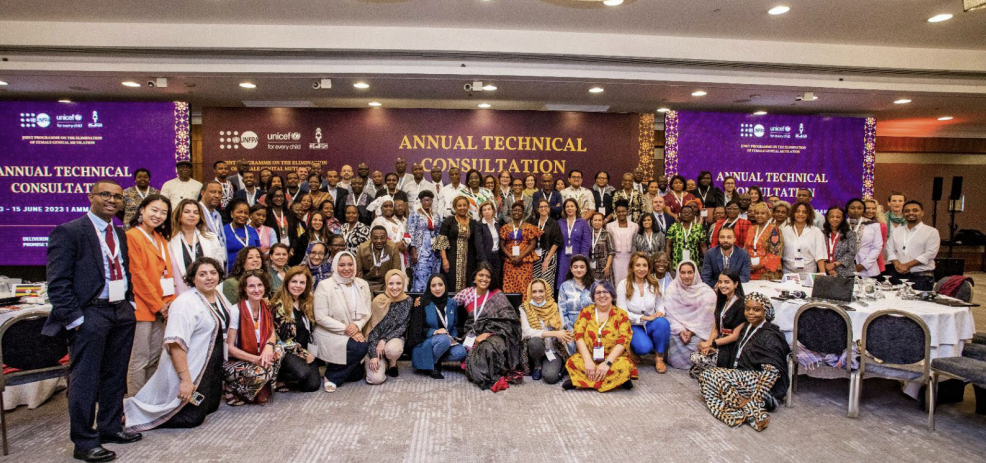
Meeting documents and reports
The 2023 Annual Technical Consultation, hosted by the UNFPA-UNICEF Joint Programme on the Elimination of Female Genital Mutilation, brought together around 100 participants from UNFPA and UNICEF teams...
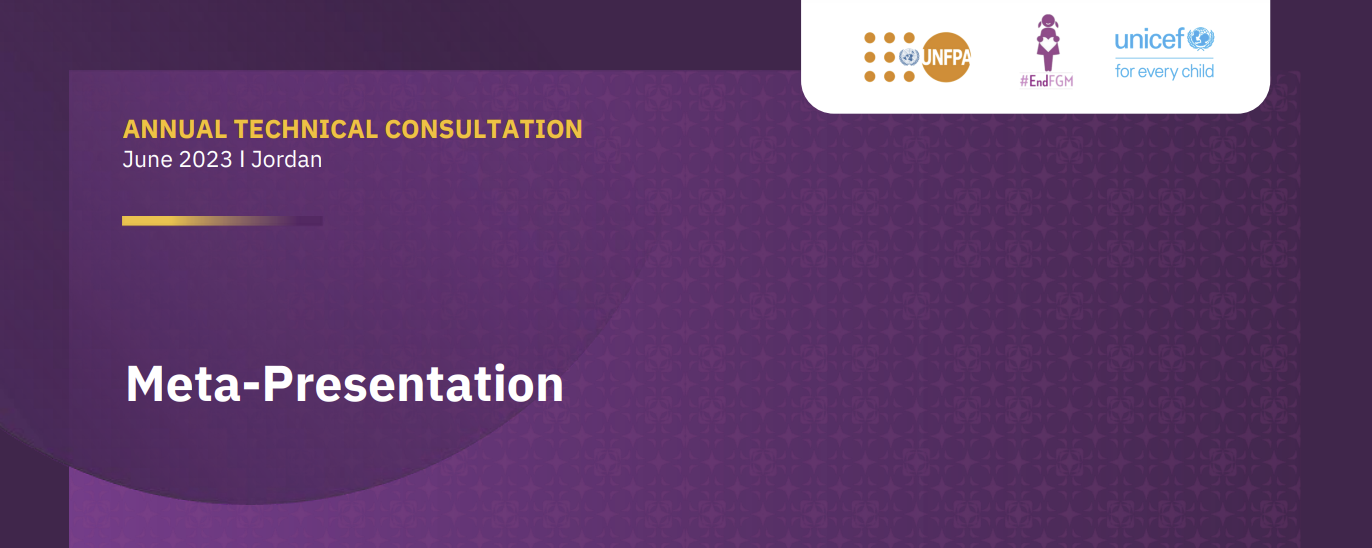
Presentation
Meta-Presentation: Annual Technical Consultation on Delivering the Global Promise to End FGM by 2030
It is a meta-presentation of the Annual Technical Consultation on the UNFPA-UNICEF Joint Programme on the Elimination of Female Genital Mutilation (FGM) held in June 2023 in Jordan.
The document cove...
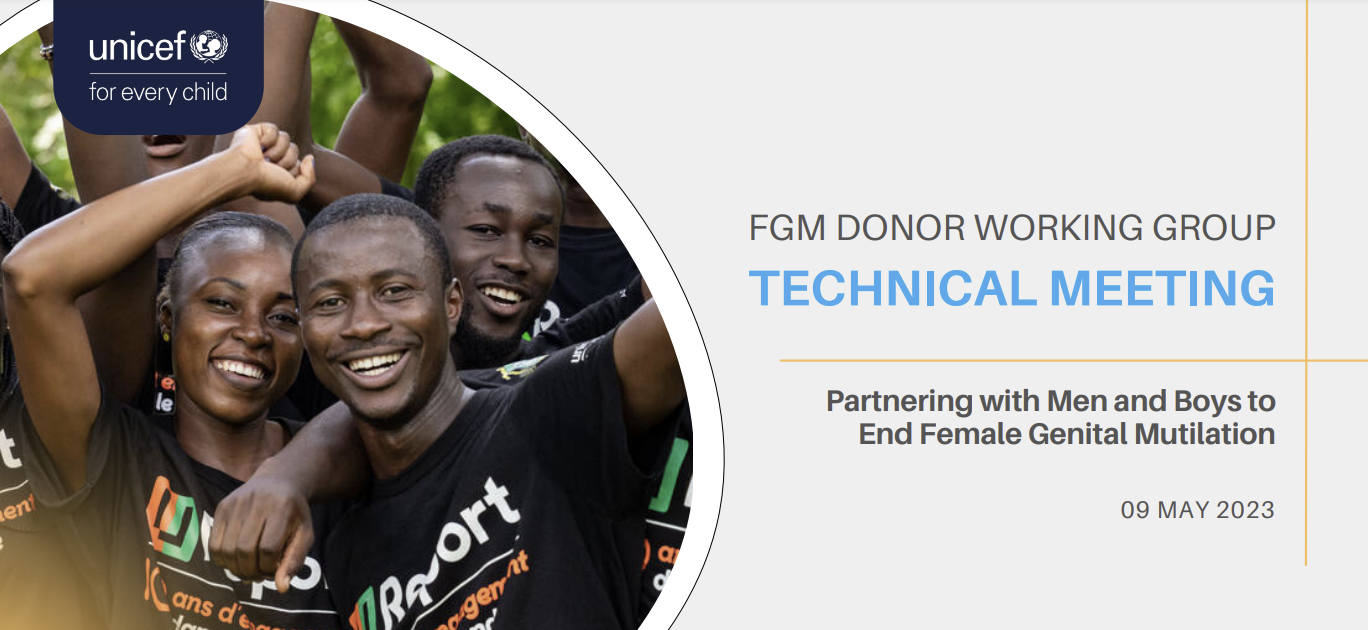
Presentation
It is a presentation of a technical meeting on partnering with men and boys to end female genital mutilation (FGM), organized by the FGM Donor Working Group on May 9, 2023.
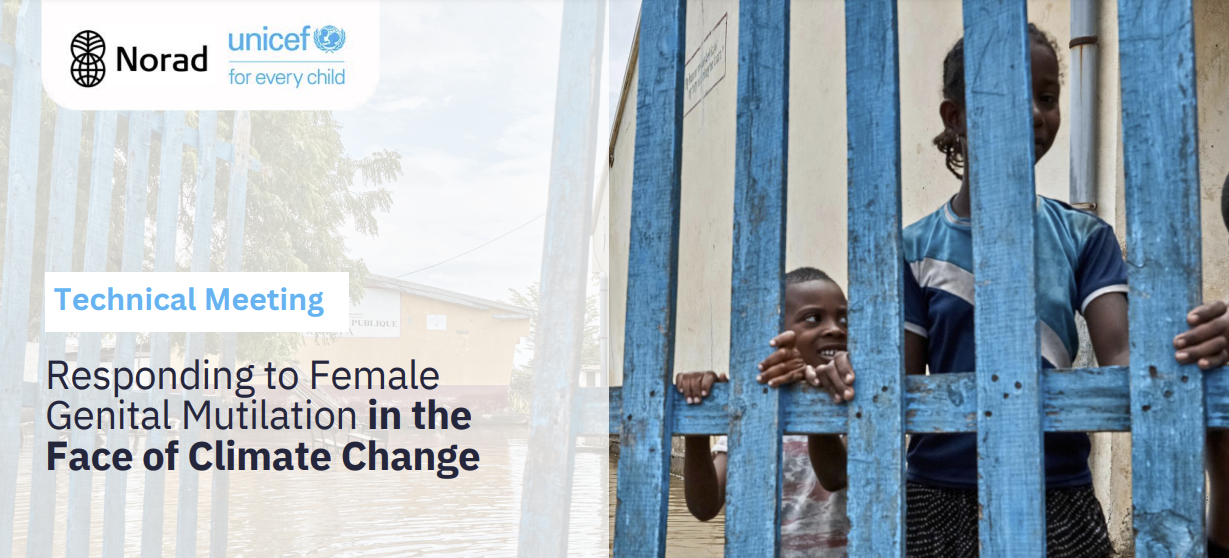
Presentation
It is a presentation of a technical meeting on Responding to Female Genital Mutilation in the Face of Climate Change, organized by the Female Genital Mutilation Donor Working Group on 29 June 2023.
T...
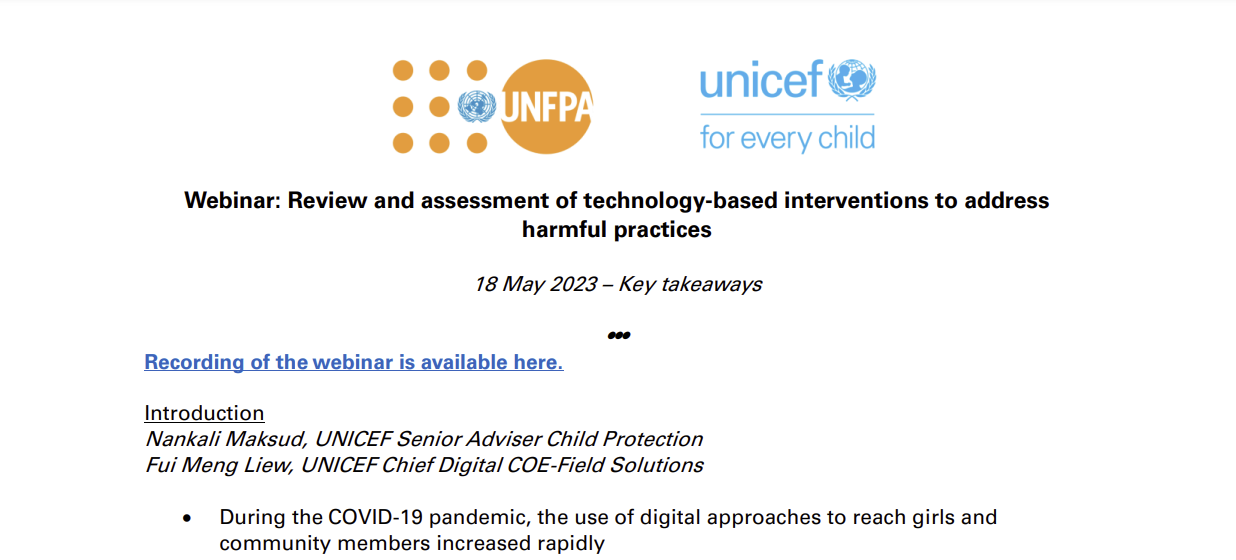
Online learning/e-learning course
It is a report of a webinar on the review and assessment of technology-based interventions to address harmful practices, such as child marriage and female genital mutilation (FGM). The webinar was hel...
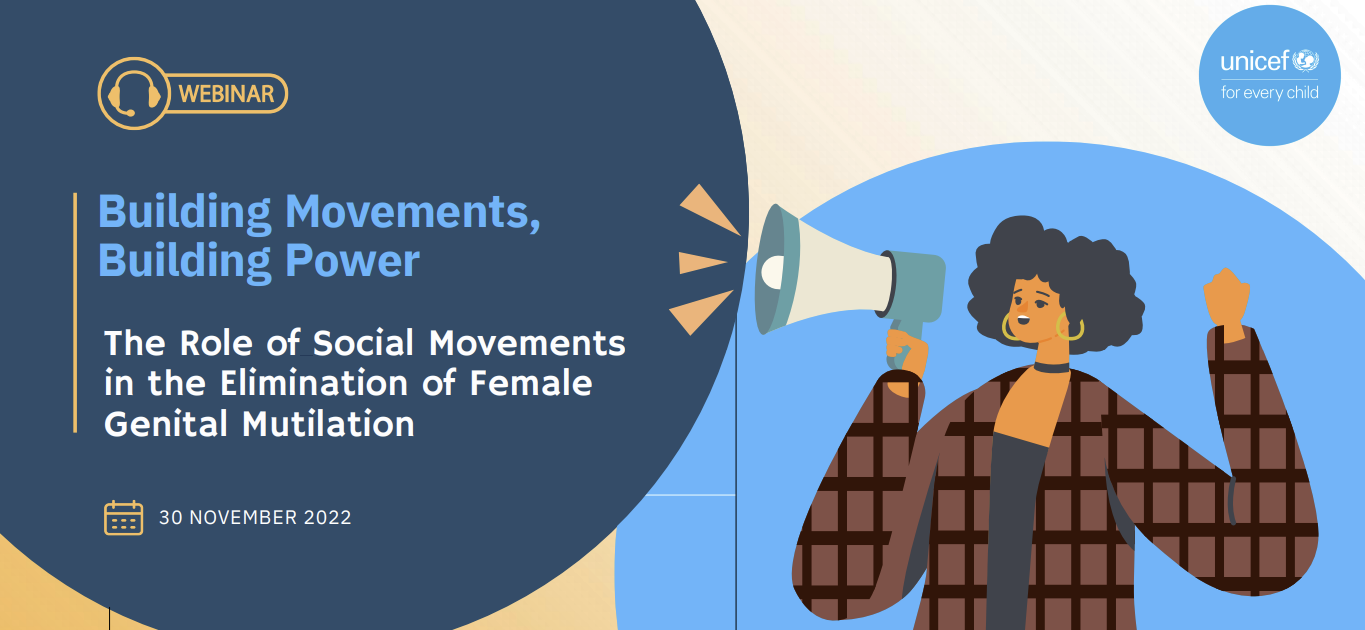
Presentation
Overview: This document is a presentation of a cross-regional conversation on implementing the humanitarian-development nexus approach for FGM elimination programming, held on 7 September 2022. It cov...
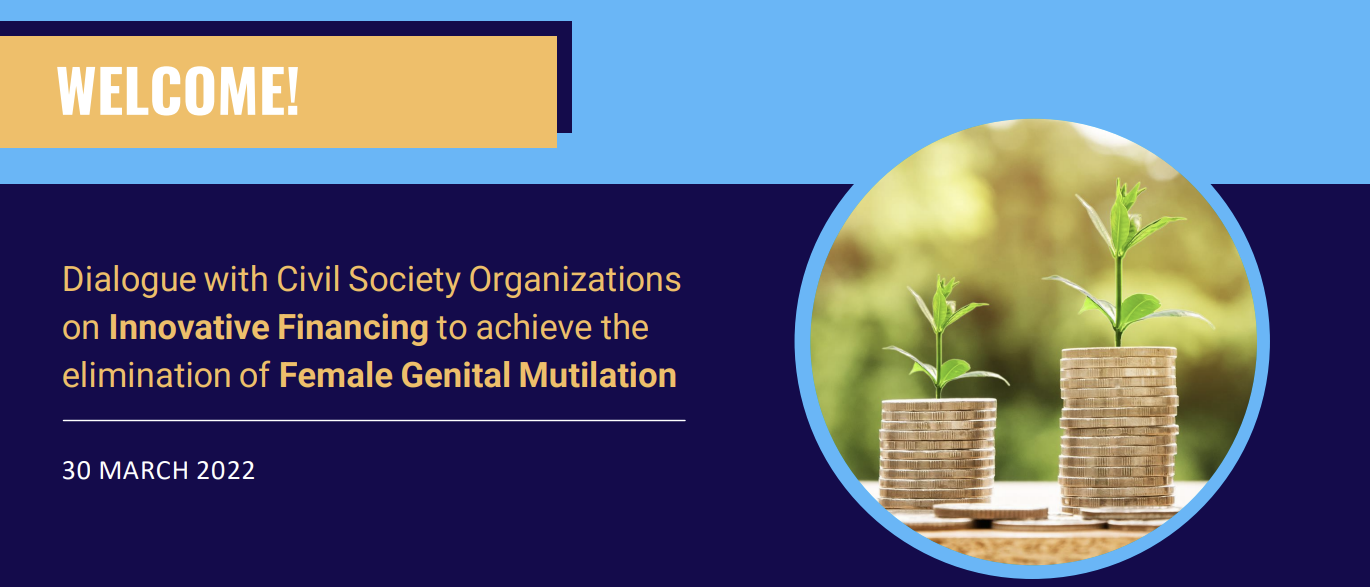
Presentation
The document was an invitation to a roundtable on Dialogue with Civil Society Organizations on Innovative Financing to achieve the elimination of Female Genital Mutilation (FGM), which took place on 3...
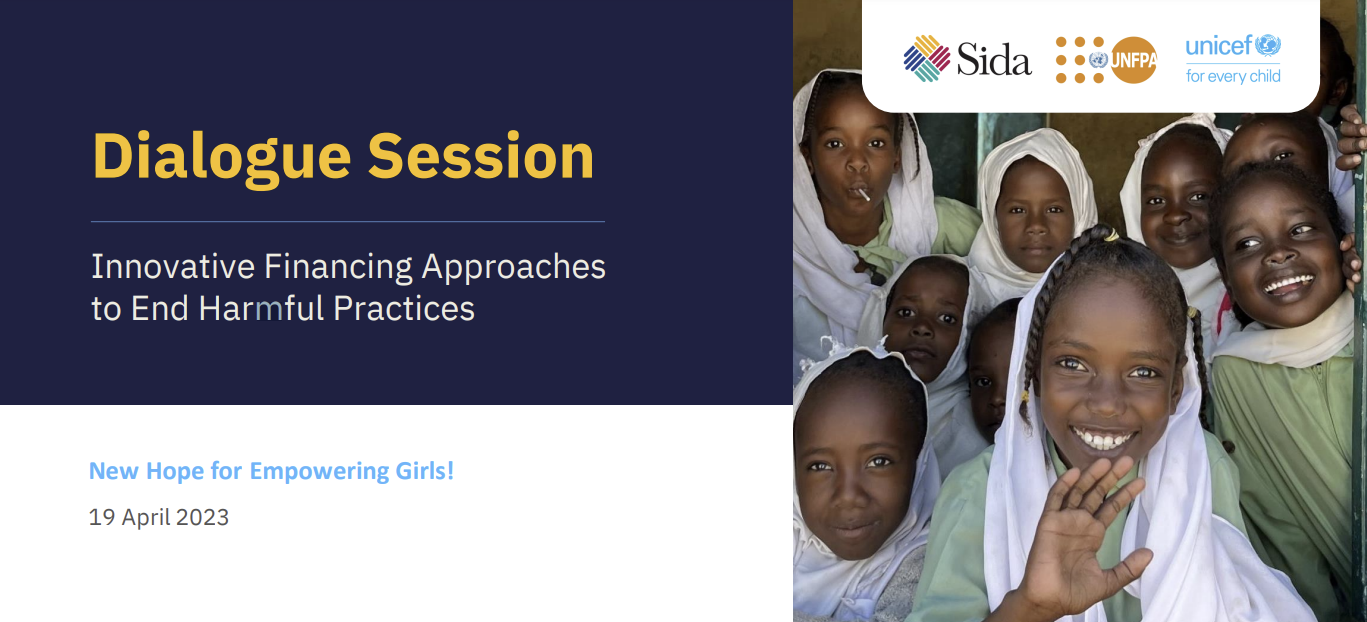
Presentation
This presentation is a dialogue session on innovative financing approaches to end harmful practices, such as female genital mutilation (FGM) and child marriage (CM). The session was held on 19 April 2...

